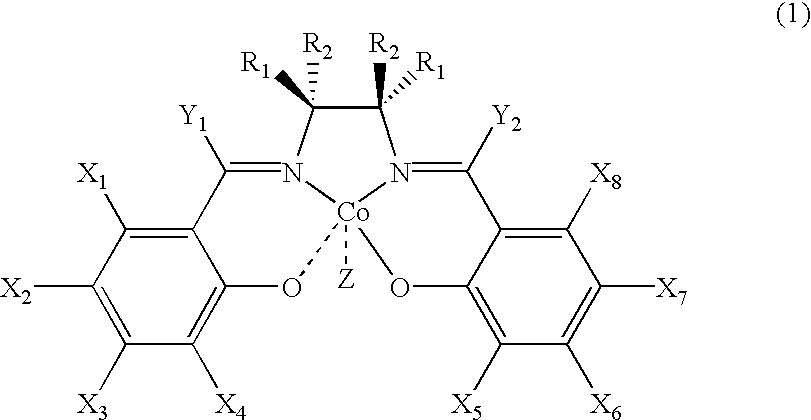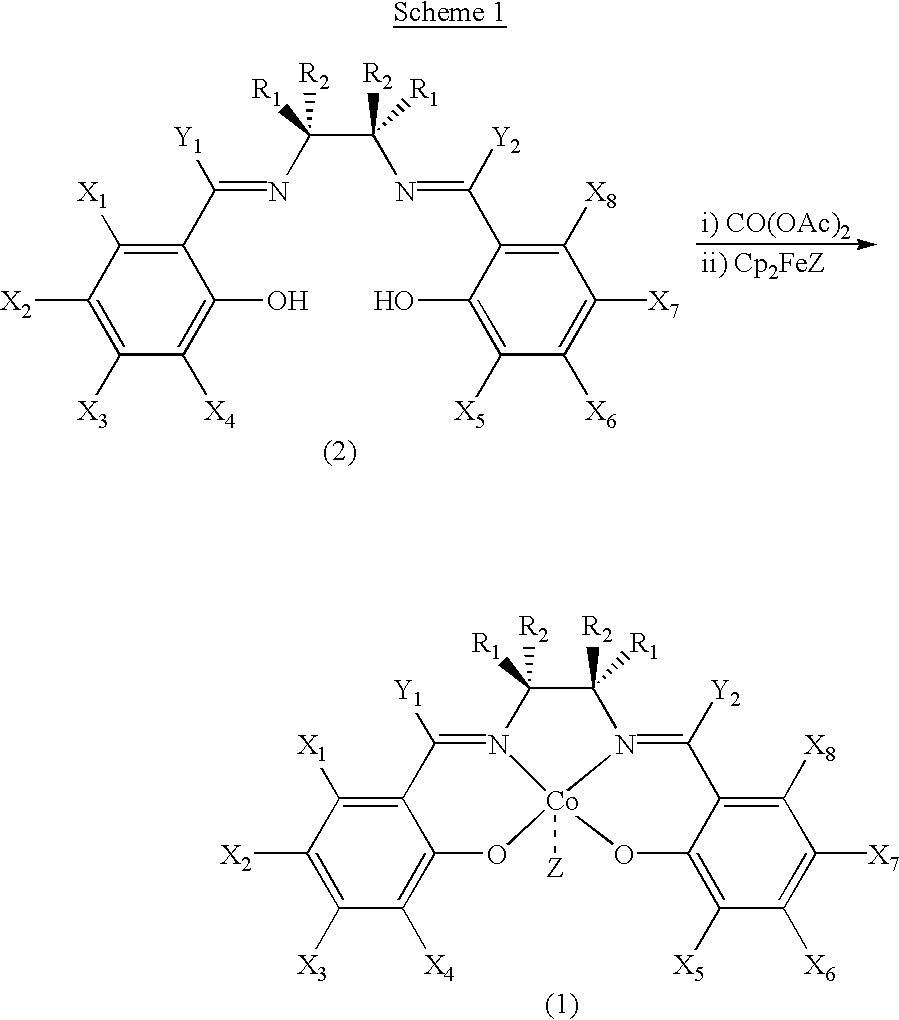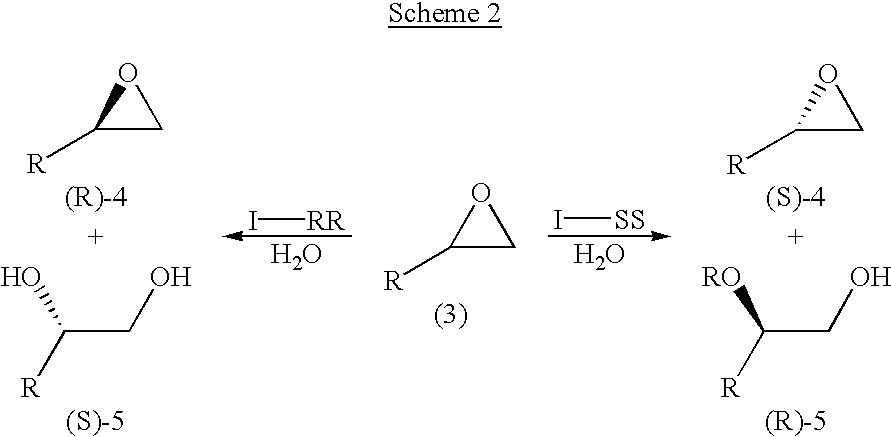Process for preparing chiral compounds from recemic epoxides by using chiral salen catalysts
a technology of chiral salen and catalyst, which is applied in the preparation of oxygen-containing compounds, organic compounds/hydrides/coordination complexes, physical/chemical process catalysts, etc., can solve the problems of deficient use for industrial purposes, limited use of these compounds, and low productivity, so as to reduce the optical purity of the corresponding product, reduce the reaction time, and reduce the effect of optical purity
- Summary
- Abstract
- Description
- Claims
- Application Information
AI Technical Summary
Benefits of technology
Problems solved by technology
Method used
Image
Examples
example 2
Preparation of (R,R)-N,N'-bis(3,5-di-t-butylsalicylidene)-1,2-cyclohexanediamino cobalt(III) hexafluorophosphate ##STR7##
The reaction was performed in the same manner as Example 1 except that (R,R)-N,N'-bis(3,5-di-t-butylsalicylidene)-1,2-cyclohexanediamine was used instead of (S,S)-N,N'-bis(3,5-di-t-butylsalicylidene)-1,2-cyclohexanediamine to obtain the target product. IR 1060, 1110, 1170, 1195, 1210, 1295, 1410, 1480, 1500, 1510, 1605, 1645 cm.sup.-1 ; .sup.31 P NMR(CDCl.sub.3) .delta.(H.sub.3 PO.sub.4, ppm)-144.49[m, J(.sup.31 P, .sup.19 F)=1.77 KHz]
example 3
Preparation of (S,S)-N,N'-bis(3,5-di-t-butylsalicylidene)-1,2-cyclohexanediamino cobalt(III) tetrafluoroborate ##STR8##
1 Equivalent of (S,S)-N,N'-bis(3,5-di-t-butylsalicylidene)-1,2-cyclohexanediamine and 1.2 equivalents of cobalt(II)acetate.4H.sub.2 O were added to ethanol and refluxed for 5 hrs while stirring. The reaction mixture was filtered and washed with small amount of ethanol at room temperature. The obtained solid, ferrocenium tetrafluoroborate and acetonitrile were mixed and refluxed for 1 while stirring. Acetonitrile was then evaporated under vacuum. Hexane was added to the residue and stirred for 30 min, followed by filtration to obtain the target product.
example 4
Preparation of (R,R)-N,N'-bis(3,5-di-t-butylsalicylidene)-1,2-cyclohexanediamino cobalt(III) tetrafluoroborate
##STR9##
The reaction was performed in the same manner as Example 3 except that (R,R)-N,N'-bis(3,5-di-t-butylsalicylidene)-1,2-cyclohexanediamine was used instead of (S,S)-N,N'-bis(3,5-di-t-butylsalicylidene)-1,2-cyclohexanediamine to obtain the target product.
PUM
| Property | Measurement | Unit |
|---|---|---|
| temperature | aaaaa | aaaaa |
| temperature | aaaaa | aaaaa |
| optical purity | aaaaa | aaaaa |
Abstract
Description
Claims
Application Information
 Login to View More
Login to View More - R&D
- Intellectual Property
- Life Sciences
- Materials
- Tech Scout
- Unparalleled Data Quality
- Higher Quality Content
- 60% Fewer Hallucinations
Browse by: Latest US Patents, China's latest patents, Technical Efficacy Thesaurus, Application Domain, Technology Topic, Popular Technical Reports.
© 2025 PatSnap. All rights reserved.Legal|Privacy policy|Modern Slavery Act Transparency Statement|Sitemap|About US| Contact US: help@patsnap.com



